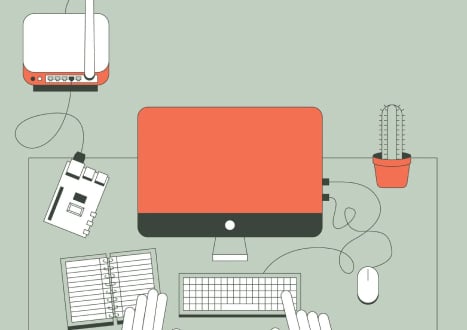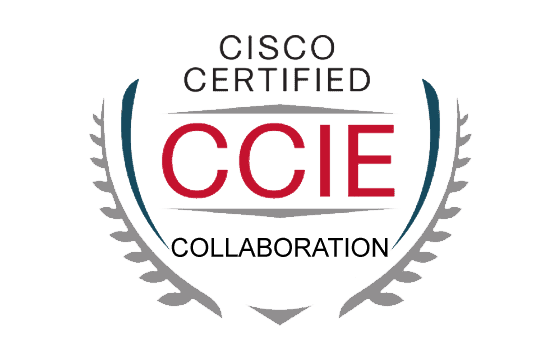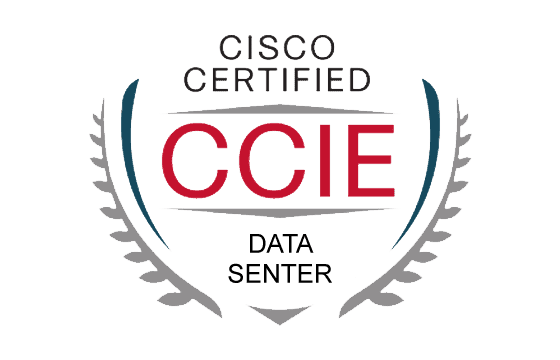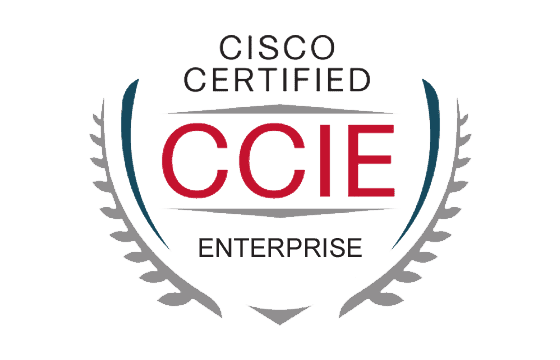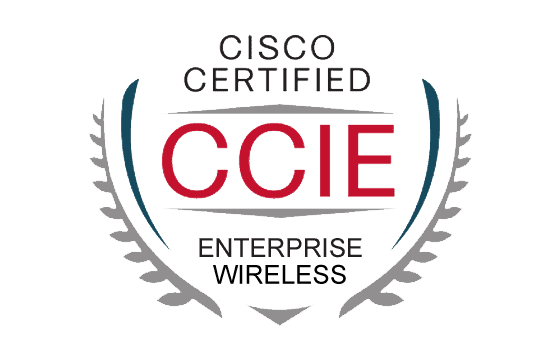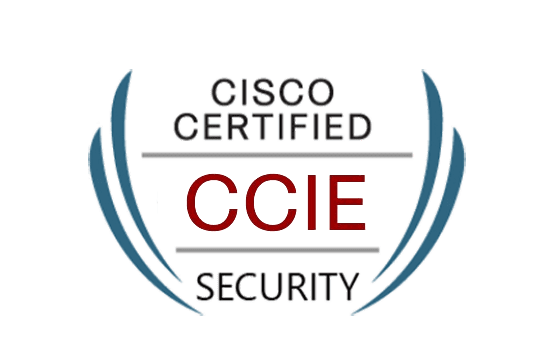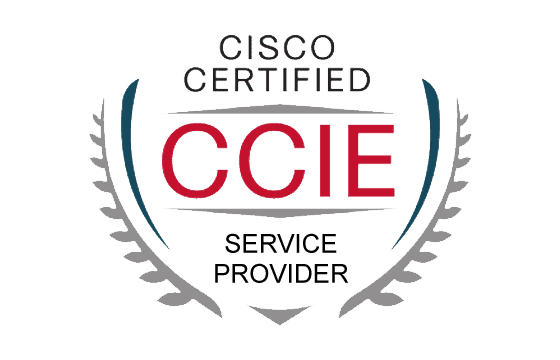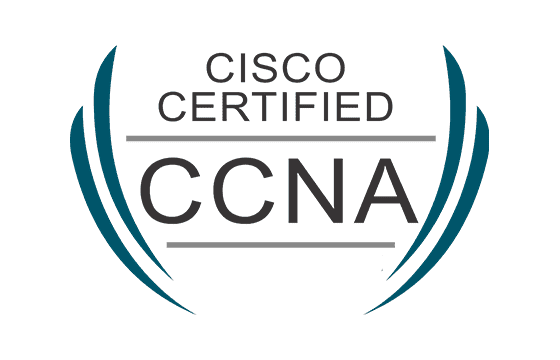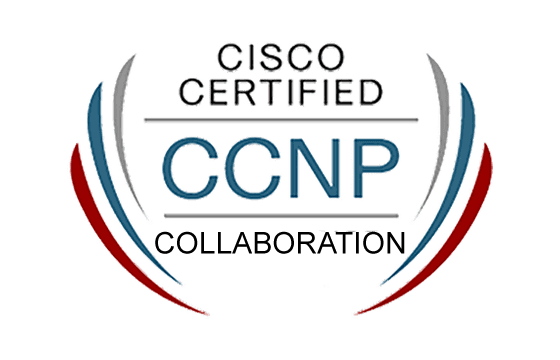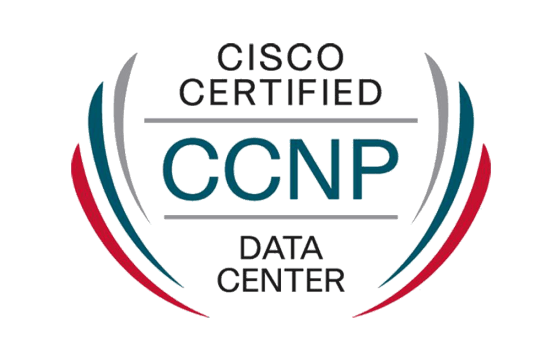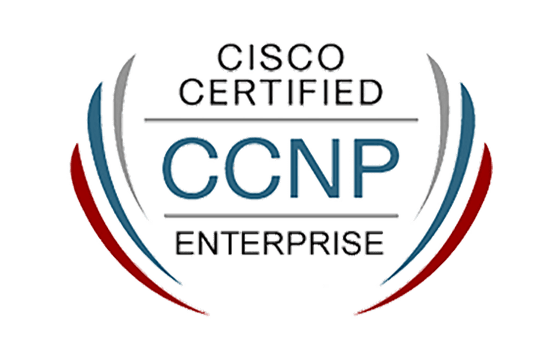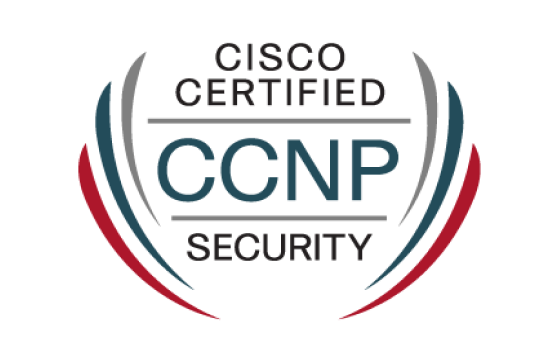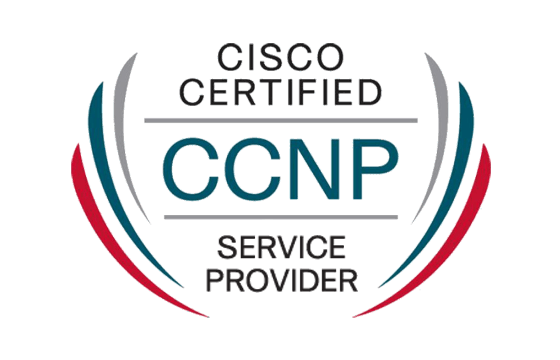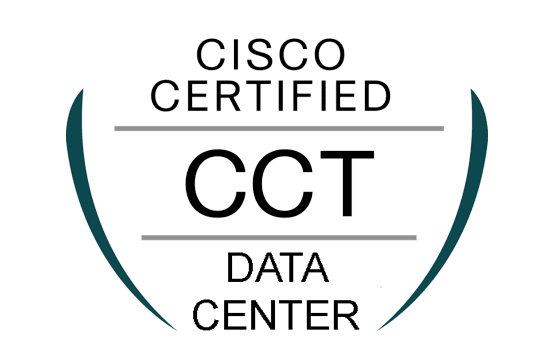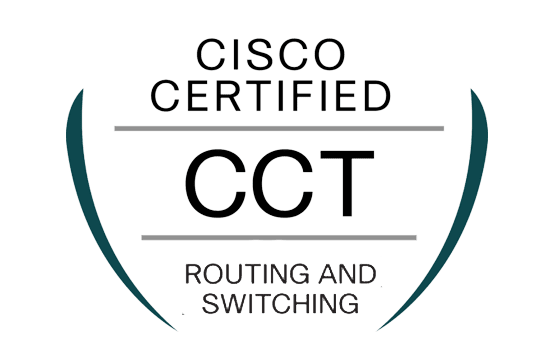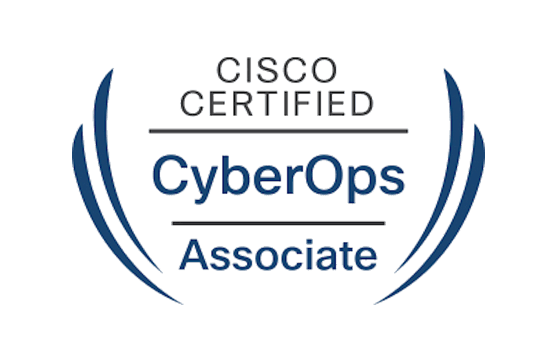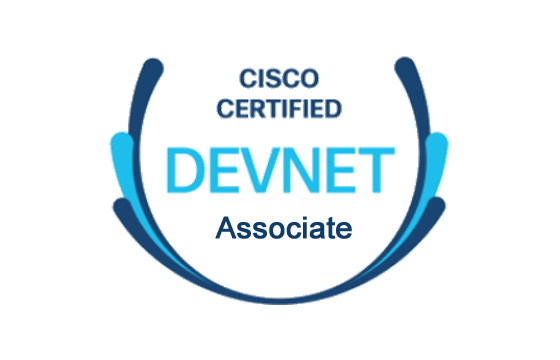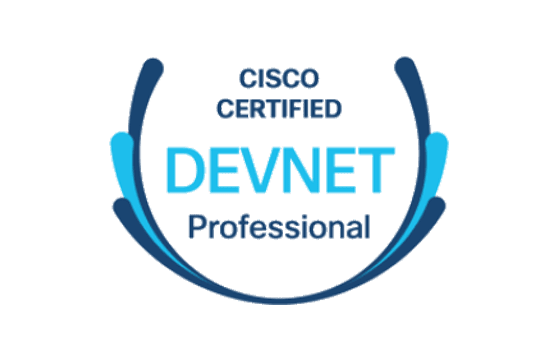Pass Your Cisco CCIE Service Provider Certification Easy!
Cisco CCIE Service Provider Certification Exams Questions & Answers, Accurate & Verified By IT Experts
Instant Download, Free Fast Updates, 99.6% Pass Rate.

Implementing and Operating Cisco Service Provider Network Core Technologies (SPCOR)
Includes 480 Questions & Answers
$69.99
Download Free CCIE Service Provider Practice Test Questions VCE Files
| Exam | Title | Files |
|---|---|---|
Exam 350-501 |
Title Implementing and Operating Cisco Service Provider Network Core Technologies (SPCOR) |
Files 1 |
Cisco CCIE Service Provider Certification Exam Dumps & Practice Test Questions
Prepare with top-notch Cisco CCIE Service Provider certification practice test questions and answers, vce exam dumps, study guide, video training course from ExamCollection. All Cisco CCIE Service Provider certification exam dumps & practice test questions and answers are uploaded by users who have passed the exam themselves and formatted them into vce file format.
CCIE Service Provider: The Ultimate Cisco Certification Guide to Advanced Networking Careers and Emerging Technologies
The Cisco Certified Internetwork Expert (CCIE) is widely recognized as one of the most prestigious networking certifications in the IT industry. It validates an expert-level understanding of complex networking concepts, practical troubleshooting skills, and the ability to design, implement, and optimize large-scale enterprise or service provider networks. Unlike many certifications that focus primarily on theoretical knowledge, CCIE emphasizes hands-on proficiency through rigorous lab exams, setting it apart as a benchmark for networking excellence.
CCIE certification covers multiple tracks tailored to specific career paths. These include enterprise infrastructure, enterprise wireless, security, data center, service provider, and collaboration. Each track focuses on a unique set of technologies, enabling professionals to specialize in areas that align with their career goals and organizational needs.
The Evolution of CCIE and Its Historical Impact
Since its introduction in the early 1990s, CCIE has been synonymous with networking expertise. Cisco designed the certification to identify professionals capable of managing large, complex networks and delivering reliable network performance in demanding enterprise and service provider environments. Over the decades, the certification has evolved to incorporate emerging technologies, such as software-defined networking, automation, and cloud integration, ensuring its relevance in modern IT infrastructures.
The certification’s reputation stems not only from its technical rigor but also from the scarcity of certified professionals worldwide. Achieving CCIE status is a mark of credibility and skill, signaling to employers that a professional has the knowledge and practical ability to handle advanced networking challenges. This reputation has made CCIE a distinguishing credential in competitive job markets, often leading to senior-level roles, higher salaries, and opportunities in network architecture and consulting.
The Structure and Requirements of CCIE
The CCIE certification process is structured to evaluate both theoretical knowledge and hands-on expertise. It consists of two primary components: the written exam and the lab exam. The written exam assesses a candidate’s understanding of networking concepts, protocols, and best practices through scenario-based questions and problem-solving exercises. Passing the written exam is a prerequisite for attempting the lab exam.
The lab exam is the defining feature of CCIE certification. It requires candidates to configure, troubleshoot, and optimize complex network topologies under timed conditions. The lab environment simulates real-world networks, including routers, switches, firewalls, and wireless devices, demanding precise configuration and rapid problem-solving. This practical evaluation ensures that certified professionals can apply their knowledge effectively in operational settings.
Candidates must also demonstrate proficiency in advanced troubleshooting techniques, network design principles, and performance optimization strategies. The combination of written and lab exams guarantees that CCIE professionals possess both theoretical insight and practical capability, making them highly valuable in technical roles.
Core Skills and Competencies Validated by CCIE
CCIE certification validates a broad range of skills essential for managing modern networks. These include:
Advanced routing and switching knowledge, covering protocols such as OSPF, EIGRP, BGP, and MPLS.
Network design and architecture, including hierarchical design, redundancy planning, and scalability considerations.
Security principles, including firewall configuration, VPNs, intrusion prevention, and access control.
Wireless networking expertise, including RF design, wireless troubleshooting, and integration with wired networks.
Data center technologies, including virtualization, storage networking, and high-availability configurations.
Automation and programmability skills, such as scripting, API usage, and SDN integration in network environments.
These skills enable professionals to maintain and optimize existing networks and design future-ready infrastructures that accommodate evolving business requirements.
Industry Recognition and Career Advancement
One of the most significant benefits of CCIE certification is the recognition it provides within the IT and networking industry. Organizations view CCIE-certified professionals as experts capable of handling critical networking tasks, leading complex projects, and mentoring other team members. This recognition translates into career advancement opportunities, including roles such as network architect, senior network engineer, solutions consultant, and network operations manager.
CCIE certification is also associated with higher salary potential compared to non-certified peers. According to industry surveys, CCIE-certified professionals consistently rank among the top earners in networking roles, reflecting both the demand for their skills and the rigorous effort required to achieve certification. Beyond financial benefits, CCIE holders gain credibility and visibility, which can lead to consulting opportunities, speaking engagements, and positions in strategic planning and technology leadership.
Relevance of CCIE in Modern Networks
As enterprise networks grow more complex, the need for highly skilled networking professionals becomes increasingly critical. CCIE certification ensures that professionals are prepared to manage large-scale networks, troubleshoot intricate issues, and implement advanced solutions. The certification’s emphasis on practical skills and problem-solving aligns with real-world demands, making CCIE holders valuable assets in network-intensive organizations.
Modern networks increasingly rely on virtualization, automation, and cloud services. CCIE-certified professionals are expected to integrate these technologies seamlessly with traditional network infrastructures, ensuring operational efficiency and business continuity. Cisco’s focus on emerging technologies within the CCIE tracks reinforces the certification’s relevance, as professionals must stay current with trends such as software-defined networking, network automation, and hybrid cloud architectures.
Network Automation and Programmability
One of the most significant shifts in the networking landscape is the move toward automation and programmability. Traditional manual configuration and troubleshooting methods are giving way to automated processes that improve efficiency, reduce errors, and enable rapid deployment of network services. CCIE certification now emphasizes these skills, requiring professionals to understand network programmability concepts, use automation tools, and integrate APIs with Cisco platforms.
Automation reduces repetitive tasks and allows network engineers to focus on strategic initiatives, such as optimizing network performance, implementing advanced security measures, and supporting digital transformation initiatives. CCIE-certified professionals are uniquely positioned to lead these efforts, leveraging their deep technical knowledge and practical experience to implement automated solutions effectively.
Cloud and Hybrid Networking Expertise
The widespread adoption of cloud services has transformed enterprise networking. Organizations now rely on hybrid environments that combine on-premises infrastructure with public and private cloud resources. CCIE certification addresses this trend by requiring knowledge of cloud networking, hybrid connectivity solutions, and the integration of cloud-based services with traditional networks.
CCIE-certified professionals can design and manage hybrid networks that deliver consistent performance, high availability, and robust security. Their expertise ensures seamless connectivity between data centers, cloud platforms, and remote offices, supporting business agility and scalability.
Security Integration in Network Design
In modern networks, security is an integral component rather than a separate function. CCIE tracks, especially in security, focus on advanced threat detection, secure access policies, and zero-trust architectures. Certified professionals are trained to design networks that balance performance, reliability, and security, protecting critical assets from cyber threats and ensuring regulatory compliance.
Security integration requires understanding encryption protocols, firewall policies, VPNs, intrusion detection systems, and access control mechanisms. CCIE professionals apply this knowledge to safeguard enterprise networks while maintaining operational efficiency, demonstrating the certification’s value beyond traditional networking tasks.
Continuous Learning and Professional Development
Cisco’s approach to certification emphasizes continuous learning. CCIE holders are expected to stay current with technological advancements, including updates to Cisco platforms, new protocols, and emerging networking paradigms. Recertification requirements encourage professionals to pursue ongoing education, attend training programs, and engage with Cisco communities.
This commitment to continuous learning ensures that CCIE-certified professionals maintain their expertise, adapt to evolving network architectures, and remain competitive in the job market. The focus on lifelong learning is a core reason why CCIE remains relevant, even as networking technologies rapidly evolve.
Impact on Career Trajectory
Achieving CCIE certification can significantly impact a professional’s career trajectory. Beyond higher salaries and senior-level positions, it enables engineers to take on leadership roles, participate in strategic planning, and influence technology decisions within organizations. CCIE certification also opens doors to consulting opportunities, global assignments, and collaboration with cross-functional teams on complex projects.
Organizations often rely on CCIE-certified engineers for high-stakes projects, network migrations, and troubleshooting critical outages. Their expertise ensures minimal downtime, optimal network performance, and successful implementation of advanced networking solutions, highlighting the strategic importance of CCIE professionals.
Future Trends in CCIE and Networking
The future of CCIE certification is closely tied to emerging trends in networking. Key areas include:
Advanced network automation using AI-driven tools and programmable interfaces.
Cloud-native network architectures and hybrid environments integrating on-premises and cloud services.
Security-focused network design with zero-trust principles and advanced threat mitigation.
Integration of DevOps practices and network-as-code approaches to streamline deployment and management.
Expansion of network visibility and analytics capabilities to support proactive monitoring and optimization.
CCIE professionals who adapt to these trends will remain at the forefront of networking innovation, providing strategic value to organizations undergoing digital transformation.
CCIE certification represents the pinnacle of networking expertise, combining theoretical knowledge, hands-on skills, and practical problem-solving ability. It offers career-defining opportunities, industry recognition, and the ability to influence technology strategy within organizations. With the networking landscape evolving toward automation, cloud integration, and advanced security, CCIE-certified professionals are uniquely positioned to lead these transformations.
The certification’s rigorous standards, continuous learning requirements, and focus on practical application ensure its ongoing relevance. For network engineers seeking to achieve technical mastery, career growth, and long-term value in Cisco environments, CCIE remains a critical investment in their professional journey.
Career Paths for CCIE Professionals
CCIE certification opens doors to a wide range of high-level career opportunities in networking. Certified professionals often pursue roles that require advanced technical knowledge and problem-solving skills. Common positions include network architect, senior network engineer, solutions consultant, and network operations manager. These roles involve designing, deploying, and optimizing complex networks while mentoring junior engineers and contributing to strategic planning initiatives.
The certification is particularly valuable for engineers aiming to work in large enterprises or service providers. It signals to employers that the professional possesses both theoretical understanding and practical expertise necessary to handle mission-critical network environments. Beyond technical positions, CCIE certification can lead to leadership roles where professionals influence technology strategy and network infrastructure decisions.
Salary Potential and Industry Value
CCIE certification is widely recognized for its impact on earning potential. Professionals with CCIE credentials consistently rank among the top earners in networking careers. Salaries vary based on experience, location, and specialization, but CCIE holders often command premiums over peers without expert-level certifications.
Industry surveys show that CCIE-certified engineers benefit from both immediate salary increases and long-term career growth. Companies view CCIE professionals as strategic assets capable of reducing downtime, improving performance, and implementing advanced network solutions. This recognition, combined with technical proficiency, ensures high demand and financial reward for certified experts.
Specialized CCIE Tracks
Cisco offers multiple CCIE tracks to allow professionals to specialize according to their interests and career goals. Each track emphasizes specific skills and technologies. Key tracks include enterprise infrastructure, which focuses on advanced routing, switching, and network design; security, which emphasizes firewalls, VPNs, and threat mitigation; data center, which covers virtualization, storage networking, and high-availability solutions; collaboration, which deals with voice, video, and messaging networks; service provider, focusing on carrier-grade networks and scalable architecture; and enterprise wireless, which specializes in wireless network design and troubleshooting.
Choosing the right track depends on career objectives and market demand. Each track requires a deep understanding of its respective domain and provides opportunities for professionals to demonstrate advanced expertise in specialized areas.
Networking in the Age of Automation
Modern networking increasingly relies on automation to improve efficiency, reduce errors, and accelerate deployment. CCIE certification now emphasizes skills in network programmability and automation. Professionals are expected to understand tools like Cisco DNA Center, Ansible, Python scripting, and APIs for network management.
Automation allows engineers to focus on strategic initiatives rather than repetitive configuration tasks. CCIE-certified professionals can implement automated workflows to optimize performance, maintain security, and support large-scale deployments. These capabilities are becoming essential as networks grow in size and complexity, reinforcing the relevance of CCIE credentials in the current job market.
Cloud Networking and Hybrid Infrastructure
The integration of cloud services has transformed enterprise networking. Organizations increasingly operate in hybrid environments that combine on-premises infrastructure with public and private cloud solutions. CCIE-certified professionals are trained to design, deploy, and manage hybrid networks that ensure consistent performance and reliability.
Cloud networking expertise involves understanding connectivity models, VPNs, SD-WAN, and secure integration between on-premises systems and cloud platforms. CCIE certification prepares professionals to handle these challenges, making them valuable assets in organizations undergoing digital transformation.
Security Challenges in Modern Networks
Security is a critical concern in today’s networks, and CCIE certification equips professionals to address advanced threats. Security-focused tracks emphasize firewall configuration, intrusion prevention, VPNs, zero-trust architectures, and access control policies. Certified engineers can design networks that protect sensitive data while maintaining high performance and availability.
Security integration is no longer an afterthought but a core component of network design. CCIE-certified professionals ensure that security is embedded into the architecture, balancing operational efficiency with protection against evolving cyber threats.
The Role of CCIE in Network Design and Optimization
CCIE certification emphasizes not only troubleshooting but also network design and optimization. Professionals are trained to create scalable, resilient, and efficient network architectures. This includes hierarchical design, redundancy planning, capacity management, and performance monitoring.
CCIE holders apply best practices to ensure minimal downtime and optimal resource utilization. Their expertise in both theoretical principles and hands-on application allows organizations to deploy complex networks that meet current needs while accommodating future growth.
Emerging Technologies and CCIE Relevance
The networking landscape is rapidly evolving with technologies like SD-WAN, intent-based networking, AI-driven monitoring, and cloud-native architectures. CCIE certification has adapted to these trends, incorporating automation, programmability, and cloud integration into exam objectives.
By mastering emerging technologies, CCIE professionals maintain their relevance in an industry characterized by constant innovation. Organizations rely on these experts to implement cutting-edge solutions, optimize performance, and drive transformation initiatives that leverage modern network capabilities.
Continuous Professional Development
Achieving CCIE certification is not the end of the learning journey. Cisco emphasizes ongoing professional development through recertification and advanced training programs. CCIE holders are expected to stay current with technology updates, evolving standards, and best practices.
Continuous learning ensures that certified professionals retain their expertise and adapt to changing network environments. It also provides opportunities to explore new technologies, deepen skills in specialized areas, and maintain a competitive edge in the job market.
Global Recognition and Career Mobility
CCIE certification is recognized worldwide, providing professionals with career mobility across regions and industries. Organizations globally seek CCIE-certified engineers to lead network projects, implement advanced solutions, and ensure operational excellence.
This global recognition allows professionals to pursue opportunities in multinational corporations, consulting firms, and service providers. Career mobility is further enhanced by the certification’s reputation for rigorous standards and practical expertise, making CCIE a valuable credential for international career advancement.
CCIE as a Foundation for Leadership Roles
CCIE certification prepares professionals for leadership roles in networking and IT infrastructure. Certified engineers often lead project teams, mentor junior staff, and contribute to strategic technology decisions. Their advanced knowledge and hands-on experience position them to influence network architecture, operational policies, and technology adoption strategies.
Leadership roles for CCIE professionals extend beyond technical execution. They involve planning, coordinating, and implementing initiatives that impact business continuity, performance, and digital transformation. This combination of technical authority and leadership capability differentiates CCIE-certified engineers from peers.
The Future of Networking Careers with CCIE
Networking careers are evolving alongside emerging technologies, cloud adoption, automation, and cybersecurity demands. CCIE certification provides a foundation for adapting to these changes. Professionals with CCIE credentials are well-equipped to handle complex network environments, integrate new technologies, and implement advanced solutions.
The future of networking careers emphasizes multi-domain expertise, combining traditional routing and switching knowledge with cloud, security, and automation skills. CCIE-certified engineers are uniquely positioned to navigate this hybrid skill landscape, maintaining relevance and career growth in an increasingly competitive industry.
Preparing for Advanced Networking Challenges
Organizations face increasingly complex networking challenges, from hybrid cloud integration to AI-driven operations. CCIE certification ensures that professionals are capable of addressing these challenges effectively. Certified engineers possess the knowledge and practical skills to troubleshoot advanced problems, optimize performance, and implement secure, scalable solutions.
Preparation for these challenges requires continuous study, hands-on experience, and exposure to diverse network scenarios. CCIE-certified professionals develop the resilience and problem-solving ability necessary to operate in high-pressure, mission-critical environments.
Strategic Value of CCIE Professionals
CCIE-certified engineers provide strategic value to organizations. Their expertise reduces downtime, enhances network performance, and supports digital transformation initiatives. They also contribute to cost optimization by designing efficient, scalable networks and implementing automation to streamline operations.
Organizations increasingly rely on CCIE professionals for high-impact decisions, including vendor selection, technology adoption, and network architecture planning. This strategic contribution underscores the value of CCIE certification beyond technical competence, positioning holders as integral to organizational success.
CCIE certification represents a career-defining credential that combines advanced technical knowledge, practical skills, and strategic value. Certified professionals benefit from high-demand career paths, global recognition, and leadership opportunities in networking. By mastering emerging technologies, automation, cloud integration, and security, CCIE-certified engineers remain at the forefront of industry innovation.
The certification’s focus on hands-on expertise, continuous learning, and multi-domain proficiency ensures ongoing relevance in a rapidly changing technological landscape. For professionals seeking career growth, recognition, and strategic impact, CCIE certification provides the foundation for long-term success in networking.
Preparing for CCIE Certification
Preparation for CCIE certification requires a combination of theoretical study, hands-on practice, and strategic planning. The certification is known for its rigor, making it essential for candidates to follow a structured learning path. Success depends not only on understanding networking concepts but also on applying them in realistic, complex network scenarios.
Candidates must start with a thorough review of the exam blueprint, understanding the specific topics and skills tested for their chosen track. This ensures that study time is focused on relevant areas, from advanced routing protocols to security policies, network automation, and cloud integration.
Understanding the Written Exam
The CCIE written exam serves as the first hurdle in the certification process. It tests a candidate’s theoretical knowledge, scenario analysis, and problem-solving skills. Questions are designed to evaluate both understanding and the ability to apply concepts to real-world networking challenges.
Preparation for the written exam should include studying official Cisco documentation, attending training courses, and practicing scenario-based questions. Time management during the exam is crucial, as candidates need to analyze complex questions efficiently and provide accurate answers under time constraints.
Mastering the Lab Exam
The lab exam is the defining component of CCIE certification, requiring candidates to demonstrate hands-on expertise. It involves configuring, troubleshooting, and optimizing a large-scale network within a limited time. The exam simulates real-world network environments with routers, switches, firewalls, wireless devices, and cloud interfaces.
Candidates must develop proficiency in reading network diagrams, interpreting requirements, and implementing solutions precisely. Mistakes can cost valuable points, so meticulous attention to detail and strong troubleshooting strategies are essential. Lab practice using simulators, home labs, or official Cisco labs is critical to success.
Building a Study Plan
A structured study plan is vital for CCIE candidates. It should include daily and weekly objectives, covering both theory and lab practice. Candidates should allocate time for reviewing core topics, practicing configurations, troubleshooting scenarios, and taking practice exams.
Regular assessment of progress helps identify weak areas and adjust the plan accordingly. Combining multiple resources, such as Cisco documentation, video tutorials, lab simulations, and study groups, enhances learning and retention.
Hands-On Lab Experience
Hands-on experience is the cornerstone of CCIE success. Candidates should gain practical exposure to network devices, configurations, and troubleshooting exercises. This experience develops muscle memory, improves speed, and builds confidence for the lab exam.
Using real equipment or high-fidelity simulators allows candidates to replicate complex network scenarios. Repetition of configurations, testing failures, and troubleshooting ensures that candidates can handle unexpected challenges during the exam.
Key Study Resources
Several resources are valuable for CCIE preparation. Official Cisco guides provide detailed explanations of protocols, network design principles, and best practices. Online forums, study groups, and mentorship programs offer community support and shared knowledge.
Lab workbooks, simulation tools, and practice exams are essential for reinforcing skills. Candidates benefit from a combination of reading, interactive labs, and scenario-based problem-solving to cover all aspects of the exam.
Time Management Strategies
Time management is crucial for both the written and lab exams. Candidates should practice completing configurations and troubleshooting tasks within set time limits. During the lab exam, prioritizing tasks, identifying critical issues first, and avoiding time-consuming errors can make the difference between passing and failing.
Developing a mental checklist for configuration, verification, and troubleshooting helps maintain focus and efficiency. Regular timed practice sessions improve speed and decision-making under pressure.
Troubleshooting Skills Development
Troubleshooting is a core competency for CCIE candidates. Engineers must diagnose network issues, identify root causes, and implement effective solutions quickly. This requires deep knowledge of protocols, network behavior, and device interactions.
Candidates should practice troubleshooting in varied scenarios, including routing loops, misconfigurations, security policy violations, and performance bottlenecks. Developing a systematic approach to problem-solving ensures confidence and accuracy during the lab exam.
Focus on Automation and Programmability
Modern CCIE tracks incorporate automation and network programmability. Candidates should familiarize themselves with tools like Python scripting, APIs, and Cisco DNA Center. Automation skills help streamline configurations, reduce errors, and improve efficiency in large networks.
Integrating automation practice into the study plan ensures candidates can apply these tools effectively in both the lab exam and real-world scenarios. Understanding automation concepts is increasingly important as networks become more software-driven.
Cloud Integration Knowledge
Hybrid and cloud networking is a significant aspect of CCIE certification. Candidates must understand cloud connectivity, SD-WAN, VPNs, and integration of cloud services with on-premises infrastructure.
Practical experience in configuring and managing hybrid networks strengthens candidates’ ability to handle cloud-based scenarios in the lab exam. This knowledge is also critical for real-world network deployments, ensuring CCIE-certified professionals remain relevant.
Exam Mindset and Stress Management
CCIE exams are challenging and stressful. Maintaining a positive mindset, managing anxiety, and staying focused during the exam are essential for success. Candidates should practice relaxation techniques, time allocation strategies, and mental preparation before exam day.
Confidence comes from consistent preparation, hands-on practice, and familiarity with lab scenarios. Candidates who remain calm under pressure can think clearly, troubleshoot effectively, and maximize performance during the lab exam.
Peer Collaboration and Mentorship
Engaging with peers and mentors accelerates learning. Study groups provide opportunities to discuss concepts, share lab scenarios, and receive feedback. Mentors with CCIE experience can offer guidance, tips, and strategies that are difficult to gain from self-study alone.
Collaboration encourages accountability, exposes candidates to diverse problem-solving approaches, and enhances understanding of complex topics. Leveraging community knowledge is a powerful tool in CCIE preparation.
Tracking Progress and Adapting Strategies
Regular assessment of knowledge and lab skills is crucial. Candidates should track progress through practice exams, timed labs, and self-evaluation. Identifying weaknesses early allows for focused improvement and adaptation of study strategies.
Flexibility in study planning ensures that candidates remain efficient and effective, covering all required topics and developing strong hands-on capabilities. Continuous refinement of approach increases the likelihood of success.
Post-Certification Planning
After achieving CCIE certification, professionals should plan for career growth and skill expansion. Recertification, learning emerging technologies, and exploring new Cisco solutions ensure that skills remain current. CCIE holders can leverage their certification for leadership roles, consulting opportunities, and involvement in strategic network projects.
Staying engaged with the networking community, attending conferences, and contributing to professional forums strengthens visibility and credibility. Continuous professional development is key to maximizing the long-term value of CCIE certification.
Practical Tips for Lab Success
Effective lab preparation involves consistent practice, understanding exam objectives, and simulating real-world scenarios. Candidates should develop troubleshooting routines, practice timed labs, and review configurations thoroughly. Documenting lab exercises and reviewing mistakes reinforces learning.
Focus on critical areas like routing, switching, security, and automation is essential. Candidates should aim for mastery rather than memorization, ensuring they can adapt to unexpected exam challenges.
Leveraging Online Resources
Online resources provide valuable support for CCIE preparation. Video tutorials, simulation software, discussion forums, and digital workbooks complement hands-on labs and official guides. Candidates can access diverse perspectives, practical tips, and additional lab exercises through these platforms.
Integrating online resources with personal study plans enhances flexibility, accessibility, and depth of learning. Candidates benefit from multiple learning formats, reinforcing knowledge and skills effectively.
Importance of Repetition and Consistency
Consistent practice and repetition are key to mastering CCIE skills. Daily lab exercises, scenario-based problem solving, and configuration review build confidence and muscle memory.
Repetition ensures that candidates can execute tasks accurately under time constraints and adapt to unexpected challenges. Consistency in study and lab practice is one of the most critical factors in achieving success.
Balancing Theory and Practice
CCIE success requires a balance of theoretical understanding and practical application. Candidates must grasp the underlying principles of networking protocols, design patterns, and troubleshooting methodologies. Simultaneously, hands-on experience in labs ensures they can apply these principles in real-world scenarios.
Integrating both aspects in preparation provides a well-rounded skill set, enabling professionals to perform effectively during the written and lab exams and in operational roles post-certification.
Preparation for CCIE certification demands a disciplined approach combining theory, hands-on practice, and strategic planning. Mastering the written and lab exams requires understanding advanced networking concepts, practicing real-world scenarios, and developing automation and cloud skills.
Consistent study, effective time management, peer collaboration, and stress management are critical to success. Post-certification, continuous learning, career planning, and engagement with the networking community ensure that CCIE professionals maintain relevance and leadership in the industry.
Achieving CCIE is not just a certification milestone; it is a foundation for long-term career growth, technical mastery, and strategic impact in the evolving networking landscape.
Emerging Technologies in Networking
The networking landscape is constantly evolving with the introduction of new technologies that enhance performance, reliability, and scalability. Emerging technologies such as software-defined networking (SDN), network automation, cloud-native networking, and AI-driven analytics are transforming how networks are designed, managed, and optimized. CCIE-certified professionals are expected to understand these technologies and apply them effectively in real-world scenarios.
Software-defined networking separates the control plane from the data plane, allowing centralized network management and dynamic configuration. CCIE-certified engineers can leverage SDN to optimize network performance, reduce manual configuration errors, and improve agility. Automation tools complement SDN by enabling efficient deployment and consistent policy enforcement across the network.
The Role of Automation and Network Programmability
Network automation and programmability have become essential in modern enterprise and service provider networks. Automation reduces manual intervention, accelerates deployments, and minimizes errors. CCIE certification emphasizes proficiency in scripting languages like Python, as well as knowledge of APIs and automation platforms such as Ansible and Cisco DNA Center.
CCIE professionals who integrate automation into network operations can optimize workflows, ensure consistent configurations, and proactively resolve potential issues. Automation also allows engineers to focus on strategic initiatives such as network optimization, security policy implementation, and cloud integration.
Cloud and Hybrid Network Integration
Cloud adoption has reshaped enterprise networking, requiring seamless integration between on-premises infrastructure and cloud services. Hybrid networks combine private data centers with public cloud resources to deliver scalability, flexibility, and high availability. CCIE-certified professionals are trained to design, deploy, and manage these hybrid networks effectively.
Understanding cloud connectivity, SD-WAN, VPNs, and cloud security is crucial. CCIE engineers can ensure consistent performance, robust security, and operational efficiency in hybrid environments, supporting business agility and digital transformation initiatives.
AI and Machine Learning in Networking
Artificial intelligence and machine learning are increasingly being applied to network monitoring, performance optimization, and security. Predictive analytics allows proactive detection of network issues, traffic bottlenecks, and potential security threats. CCIE-certified professionals leverage AI-driven tools to enhance visibility, streamline troubleshooting, and optimize network performance.
Machine learning algorithms can automatically adjust routing, balance loads, and detect anomalies in network traffic. CCIE-certified engineers who understand and implement these technologies can improve reliability, reduce downtime, and support advanced network management strategies.
Security in Modern Networks
Cybersecurity remains a critical concern in today’s networking environments. Networks face increasingly sophisticated threats, requiring robust security measures integrated directly into network design. CCIE certification emphasizes security as a core component, ensuring professionals can implement firewalls, intrusion detection systems, VPNs, and zero-trust architectures effectively.
Security considerations extend beyond traditional perimeter defenses. CCIE-certified engineers design networks that balance performance with protection, ensuring data integrity, regulatory compliance, and threat mitigation in dynamic environments.
Network Design for Scalability and Resilience
Modern enterprises require networks that can scale efficiently while maintaining high reliability. CCIE-certified professionals are trained in hierarchical design, redundancy planning, capacity management, and fault tolerance.
Designing scalable networks involves understanding bandwidth requirements, traffic patterns, and the impact of new technologies. CCIE engineers optimize network topology to accommodate growth, prevent single points of failure, and ensure seamless service delivery even during high-demand periods or component failures.
Data Center Technologies and Virtualization
Data center networks are critical for supporting enterprise operations, cloud services, and virtualization platforms. CCIE certification includes expertise in data center technologies, including storage networking, high-availability configurations, and server virtualization.
Virtualized networks improve resource utilization, simplify management, and provide flexibility in deploying applications and services. CCIE professionals design and manage these infrastructures, ensuring performance, security, and scalability in data center environments.
Collaboration and Unified Communications
Unified communications and collaboration solutions are integral to modern enterprise networks. CCIE-certified engineers working in collaboration tracks focus on voice, video, messaging, and conferencing technologies. They ensure seamless integration between communication platforms and network infrastructure, maintaining performance, security, and reliability.
Collaboration technologies require careful planning of bandwidth, latency, and redundancy. CCIE professionals optimize these systems for high-quality user experiences while maintaining operational efficiency and security.
SD-WAN and WAN Optimization
Software-defined WAN (SD-WAN) is transforming wide-area network architecture, providing centralized control, dynamic path selection, and optimized application delivery. CCIE-certified engineers implement SD-WAN solutions to enhance connectivity between data centers, branch offices, and cloud environments.
WAN optimization techniques, including traffic shaping, compression, and caching, improve application performance and reduce costs. CCIE professionals ensure reliable and secure communication across geographically dispersed networks.
Advanced Troubleshooting in Modern Networks
Troubleshooting remains a cornerstone of CCIE expertise. Modern networks involve complex interactions between physical infrastructure, virtualized resources, and cloud services. CCIE-certified professionals develop systematic approaches to diagnosing issues, identifying root causes, and implementing corrective actions efficiently.
Advanced troubleshooting includes analyzing network logs, monitoring traffic patterns, performing protocol analysis, and leveraging automation tools to detect anomalies. The ability to troubleshoot complex environments ensures network reliability and minimizes service disruptions.
Multi-Domain Expertise
CCIE certification encourages professionals to develop expertise across multiple domains, including routing and switching, security, wireless, data center, and collaboration. Multi-domain knowledge enables engineers to design and manage integrated network solutions, address cross-functional challenges, and optimize end-to-end network performance.
Organizations benefit from CCIE professionals who can bridge gaps between domains, ensuring cohesive design, streamlined operations, and robust security across the entire network infrastructure.
Continuous Learning and Skill Enhancement
The pace of networking innovation requires continuous learning. CCIE-certified engineers must stay current with new technologies, industry standards, and best practices. Ongoing education, attending conferences, participating in training programs, and engaging with professional communities are essential for maintaining expertise.
Continuous skill enhancement ensures that CCIE professionals can adopt emerging technologies, implement innovative solutions, and maintain a competitive advantage in the networking industry.
CCIE in Enterprise Transformation
Enterprises are increasingly relying on digital transformation initiatives to improve efficiency, agility, and customer experience. CCIE-certified professionals play a crucial role in these transformations by designing networks that support cloud adoption, automation, security, and collaboration.
By aligning network infrastructure with business objectives, CCIE engineers help organizations achieve operational excellence, reduce costs, and maintain scalability. Their expertise ensures that technology investments deliver strategic value.
The Strategic Value of CCIE Professionals
CCIE-certified engineers contribute strategic value beyond technical execution. They influence network architecture, technology selection, and operational policies. Their insights help organizations implement solutions that balance performance, cost, and security effectively.
Employers recognize that CCIE professionals reduce downtime, optimize resource utilization, and enable seamless adoption of emerging technologies. Their strategic impact extends to long-term planning, digital transformation, and competitive advantage in the market.
Preparing for the Future of Networking
The future of networking emphasizes automation, cloud integration, AI-driven analytics, and advanced security. CCIE certification equips professionals to navigate these changes, ensuring they remain relevant and capable in dynamic environments.
Preparation involves mastering emerging technologies, gaining hands-on experience, and staying informed about industry trends. CCIE-certified engineers who embrace continuous learning are positioned to lead innovation and drive strategic initiatives within organizations.
Global Impact and Career Opportunities
CCIE certification is recognized worldwide, providing professionals with global career opportunities. Organizations across industries seek certified experts to manage complex networks, implement advanced solutions, and ensure operational efficiency.
Global recognition allows CCIE-certified engineers to pursue international assignments, consulting roles, and cross-functional projects. This mobility enhances career growth, exposure to diverse technologies, and access to high-impact projects.
CCIE-certified professionals play a pivotal role in modern networking, leveraging expertise in emerging technologies, automation, cloud integration, security, and multi-domain network management. Their skills enable organizations to design, implement, and optimize networks that meet business objectives while maintaining high performance and reliability.
As networks continue to evolve, CCIE certification ensures professionals remain at the forefront of innovation, equipped to handle complex challenges and drive strategic value. The combination of technical mastery, hands-on experience, and continuous learning positions CCIE-certified engineers as leaders in the networking industry.
The Future of CCIE Certification
The CCIE certification has continually evolved to remain relevant in the fast-changing networking landscape. As enterprise networks become more complex and technology adoption accelerates, CCIE-certified professionals are increasingly critical for organizations seeking to maintain performance, reliability, and security. Emerging areas such as network automation, AI-driven operations, cloud integration, and cybersecurity will continue to shape the CCIE curriculum and skills requirements.
By adapting to new technologies and integrating innovative network solutions, CCIE-certified engineers maintain a competitive edge. The certification’s future is closely tied to the evolution of networking itself, ensuring that holders are prepared for the demands of tomorrow’s enterprise environments.
CCIE and Digital Transformation
Digital transformation is reshaping how organizations operate, placing increased reliance on robust, agile, and secure networks. CCIE-certified professionals are key contributors to these initiatives, enabling seamless cloud adoption, enhanced collaboration, and automation of network operations.
CCIE engineers design networks capable of supporting new business models, remote work environments, and global connectivity. Their expertise ensures that digital transformation projects deliver operational efficiency, customer satisfaction, and measurable business outcomes.
Advancements in Network Automation
Network automation continues to be a critical component of modern IT strategy. CCIE-certified professionals are expected to implement automated processes for configuration, monitoring, and troubleshooting. Tools like Ansible, Python scripts, and Cisco DNA Center help streamline operations, reduce human error, and accelerate deployment of new services.
Automation enables organizations to scale network operations efficiently, optimize resource allocation, and quickly respond to changing business requirements. CCIE certification ensures professionals are prepared to lead automation initiatives that enhance performance and operational reliability.
Cloud and Hybrid Network Strategies
Cloud and hybrid networks are essential for organizations aiming for scalability and flexibility. CCIE-certified engineers design and manage integrated solutions that connect on-premises infrastructure with public and private cloud environments.
Knowledge of SD-WAN, VPNs, and hybrid connectivity solutions allows professionals to ensure consistent performance, security, and reliability. CCIE expertise enables organizations to fully leverage cloud resources while maintaining operational control and compliance with regulatory standards.
Security Challenges and CCIE Expertise
The increasing sophistication of cyber threats requires robust security strategies. CCIE-certified professionals bring advanced skills in designing secure network architectures, implementing firewalls, VPNs, intrusion detection, and zero-trust models.
They play a pivotal role in protecting sensitive data, maintaining business continuity, and mitigating risks. Security-focused CCIE tracks ensure that engineers are equipped to address modern cyber threats while balancing performance, availability, and operational efficiency.
AI and Machine Learning in Networking
Artificial intelligence and machine learning are transforming network monitoring, analytics, and predictive maintenance. CCIE-certified professionals leverage these technologies to proactively identify issues, optimize traffic flow, and enhance security.
AI-driven analytics enables smarter decision-making, faster response times, and predictive troubleshooting. CCIE engineers who master these tools can deliver high-value insights and maintain networks that meet evolving business demands.
Career Advancement Opportunities
CCIE certification opens doors to advanced career opportunities, including network architect, senior network engineer, solutions consultant, and leadership roles. Organizations value CCIE professionals for their technical mastery, problem-solving skills, and ability to lead critical projects.
High-level certification can also result in increased earning potential, global mobility, and opportunities to work with cutting-edge technologies. CCIE-certified professionals often participate in strategic planning and influence organizational technology adoption.
Mentorship and Industry Recognition
CCIE-certified engineers are recognized as experts within the IT and networking community. This recognition allows them to mentor junior engineers, share best practices, and contribute to professional forums. Mentorship enhances skill development across the organization and establishes the certified professional as a thought leader.
Industry recognition also contributes to career visibility, offering opportunities to speak at conferences, participate in consulting projects, and engage in strategic technology initiatives.
Preparing for Emerging Networking Trends
Future networks will rely heavily on automation, cloud-native architectures, AI-driven operations, and advanced security models. CCIE certification ensures professionals are equipped to adapt to these trends and remain effective in dynamic environments.
Continuous learning, engagement with technology communities, and hands-on experience with emerging tools are essential. CCIE engineers who embrace these practices maintain their relevance and leadership in the industry.
Strategic Impact on Organizations
CCIE-certified professionals contribute directly to organizational strategy. Their expertise reduces network downtime, enhances performance, and supports digital transformation initiatives. By designing resilient, scalable, and secure networks, they enable organizations to achieve operational excellence and competitive advantage.
The strategic impact extends beyond technology, influencing cost optimization, vendor selection, and long-term infrastructure planning. Organizations rely on CCIE engineers to ensure that networking investments align with business objectives.
Multi-Domain Expertise for Integrated Solutions
Modern enterprise networks require multi-domain expertise, combining routing, switching, security, data center, wireless, and collaboration skills. CCIE-certified engineers can design and manage integrated solutions that address complex operational challenges and optimize end-to-end performance.
Multi-domain proficiency enables engineers to coordinate across teams, implement cohesive strategies, and troubleshoot issues spanning multiple technologies. This holistic approach enhances reliability and reduces operational complexity.
Global Demand and Career Mobility
CCIE certification is recognized worldwide, providing professionals with opportunities to work in diverse geographic regions and industries. Organizations globally seek CCIE-certified engineers to manage complex networks, implement advanced solutions, and ensure operational continuity.
Global demand ensures career mobility, allowing professionals to pursue international assignments, consulting opportunities, and high-impact projects. This mobility enhances exposure to diverse technologies and accelerates professional growth.
Continuing Education and Recertification
CCIE certification is maintained through recertification and continuous education. Professionals are encouraged to stay updated on technological advancements, emerging protocols, and best practices.
Engaging in ongoing education ensures that CCIE-certified engineers remain competent, maintain their credential, and adapt to evolving network environments. Continuous learning supports career longevity and positions professionals as leaders in networking innovation.
CCIE as a Foundation for Leadership
CCIE certification prepares professionals for leadership and strategic roles within organizations. Certified engineers often lead technical teams, oversee network projects, and influence decision-making in technology adoption.
Their expertise allows organizations to plan infrastructure upgrades, implement automation, and integrate cloud solutions effectively. CCIE-certified professionals bridge the gap between technical execution and strategic planning, enhancing organizational success.
The Long-Term Value of CCIE
The value of CCIE certification extends beyond immediate career benefits. It provides a foundation for long-term professional growth, technical mastery, and strategic influence. Certified engineers remain relevant in a rapidly evolving networking industry, equipped to handle emerging technologies, complex infrastructures, and organizational challenges.
Long-term value also includes opportunities for consulting, global assignments, mentoring, and participation in industry forums. CCIE professionals are recognized as experts who can shape the future of networking within organizations and across the industry.
Adapting to Technological Evolution
Networks will continue to evolve, integrating automation, cloud, AI, and advanced security features. CCIE-certified professionals are trained to adapt, innovate, and implement solutions that address these changes effectively.
Adapting to technological evolution requires continuous skill development, hands-on practice, and staying informed about emerging trends. CCIE engineers who embrace adaptability maintain their relevance and continue to provide strategic value.
Driving Innovation in Enterprise Networks
CCIE-certified engineers are uniquely positioned to drive innovation in enterprise and service provider networks. Their expertise enables organizations to adopt new technologies, improve operational efficiency, and optimize performance.
By implementing innovative solutions, CCIE professionals contribute to business transformation, digital initiatives, and enhanced user experiences. Their role extends beyond technical execution, influencing organizational strategy and competitive positioning.
Preparing for the Next Generation of Networks
The next generation of networks emphasizes automation, cloud-native design, AI-assisted operations, and security by design. CCIE-certified professionals are at the forefront of this transformation, equipped to implement future-ready solutions.
Preparation includes mastering emerging tools, practicing complex configurations, and understanding multi-domain integration. CCIE engineers ensure that networks remain agile, secure, and capable of supporting evolving business needs.
Conclusion
CCIE certification remains a benchmark for networking expertise, providing professionals with technical mastery, career mobility, and strategic influence. The certification equips engineers to manage complex networks, integrate emerging technologies, and support digital transformation initiatives.
Future trends such as automation, cloud integration, AI-driven analytics, and advanced security reinforce the ongoing relevance of CCIE certification. Professionals who achieve CCIE status gain long-term career benefits, global recognition, and opportunities to drive innovation and organizational success.
The CCIE journey represents not only the attainment of technical excellence but also the foundation for leadership, strategic impact, and continued professional growth in the ever-evolving networking industry.
ExamCollection provides the complete prep materials in vce files format which include Cisco CCIE Service Provider certification exam dumps, practice test questions and answers, video training course and study guide which help the exam candidates to pass the exams quickly. Fast updates to Cisco CCIE Service Provider certification exam dumps, practice test questions and accurate answers vce verified by industry experts are taken from the latest pool of questions.
Cisco CCIE Service Provider Video Courses
Top Cisco Certification Exams
- 200-301
- 350-401
- 350-701
- 300-410
- 300-715
- 820-605
- 350-601
- 300-710
- 300-420
- 300-425
- 300-415
- 350-501
- 200-901
- 700-805
- 350-901
- 350-801
- 300-730
- 400-007
- 300-620
- 200-201
- 500-220
- 300-435
- 350-201
- 300-430
- 300-810
- 300-815
- 300-515
- 100-150
- 300-610
- 300-820
- 300-440
- 300-510
- 100-140
- 300-735
- 300-720
- 300-910
- 300-215
- 300-615
- 300-635
- 300-535
- 700-250
- 300-725
- 700-750
- 500-560
- 500-443
Site Search:




